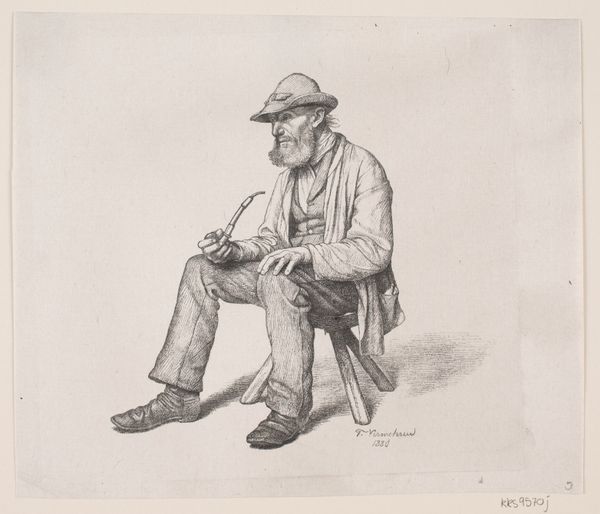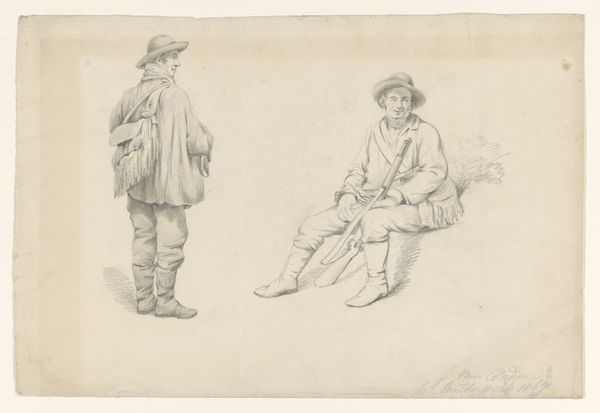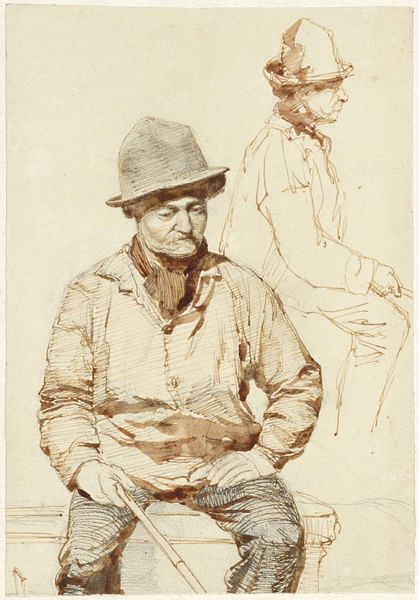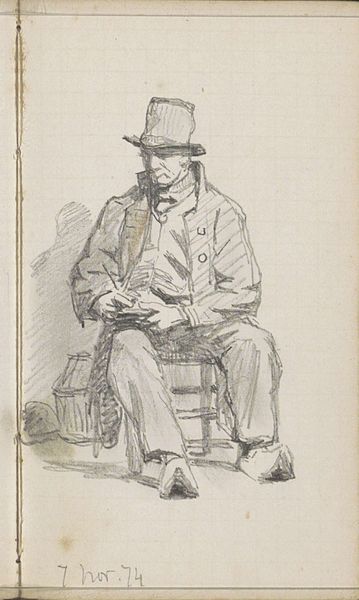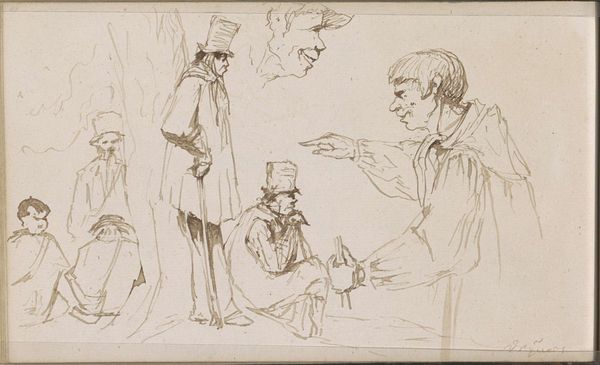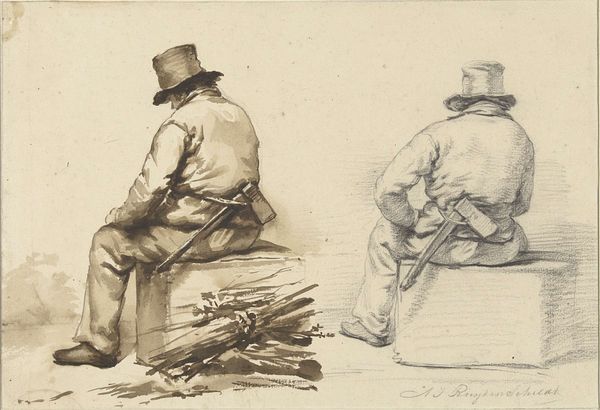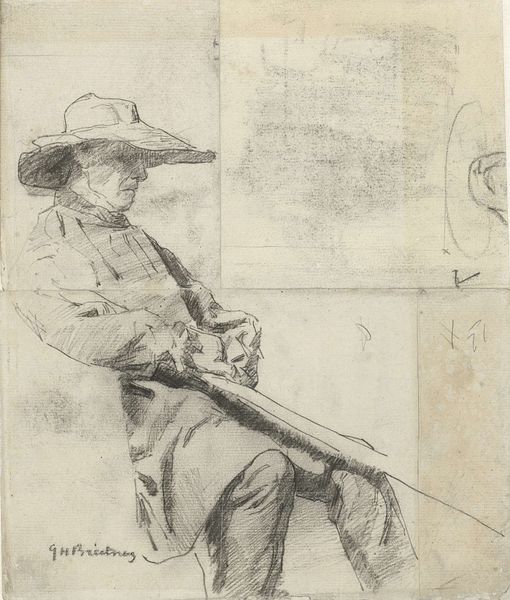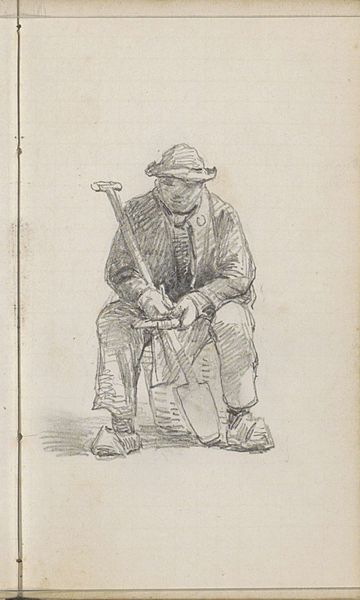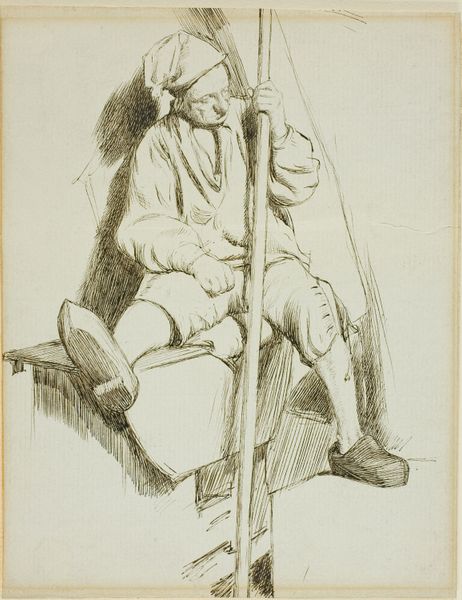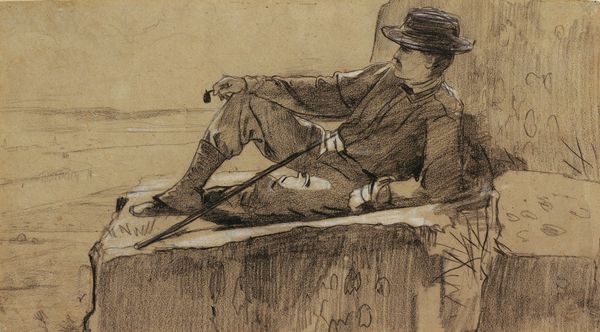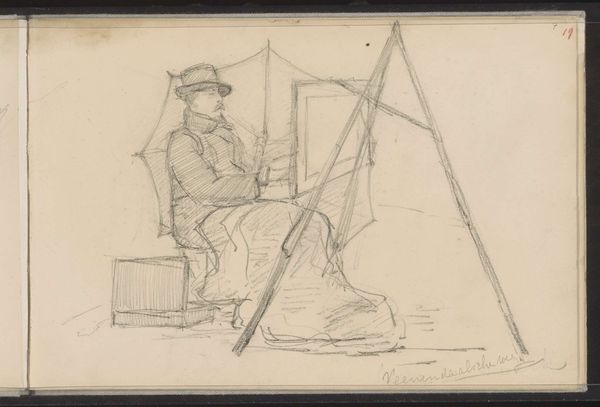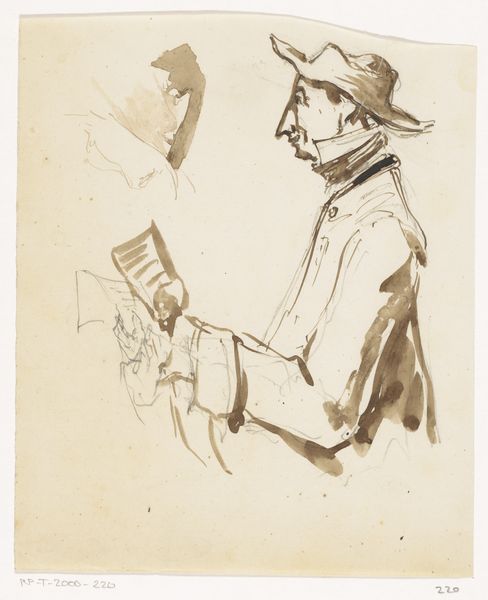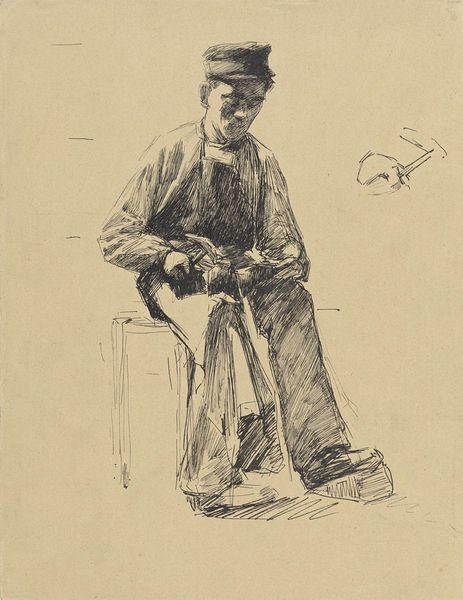
Copyright: Rijks Museum: Open Domain
Editor: So, here we have Johannes Tavenraat's "Jachtopziener Adrianus Sebel in de eendenhut," made between 1864 and 1868, using ink, charcoal, and watercolor on paper. It's a striking double portrait. I’m initially struck by the contrasting depictions of the same man. How do you interpret this work? Curator: What I find most compelling is the implicit dialogue between man and nature, framed through the lens of class and labor. Consider the context: mid-19th century, a period of rapid industrialization and urbanization, yet this image focuses on the rural, on hunting as a profession. How might we view Sebel’s position in this societal shift, a figure literally obscured by reeds, marginalized yet essential to the landed gentry? The differing portrayals, one active, one passive, highlight a tension between agency and subordination. Editor: That's a fascinating perspective! I hadn't considered the socio-economic implications so deeply. The reeds do seem to confine him. Curator: Exactly. Consider the act of hunting itself: it’s not merely about sport, but also about power dynamics, about who has the right to exert control over the natural world, and who is employed to facilitate that control. How does that change our view of Sebel? Is he a participant, or an instrument? The very composition implies he’s being watched, surveilled within his own environment. Editor: That's really given me something to think about. I was initially drawn to the romantic style, but now I see the deeper layers of social commentary. Curator: Precisely! By interrogating these representations, we can begin to unravel the complex relationships between humans, labor, and the environment.
Comments
No comments
Be the first to comment and join the conversation on the ultimate creative platform.
